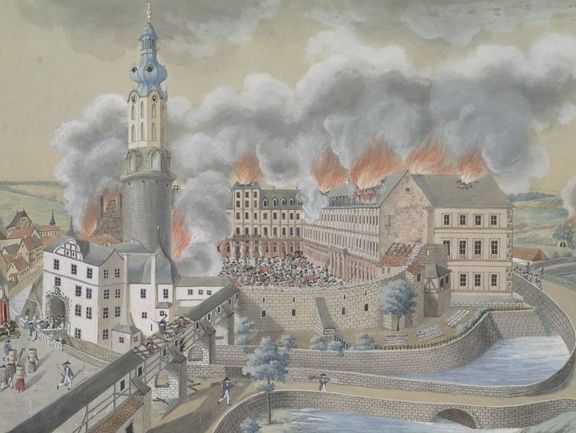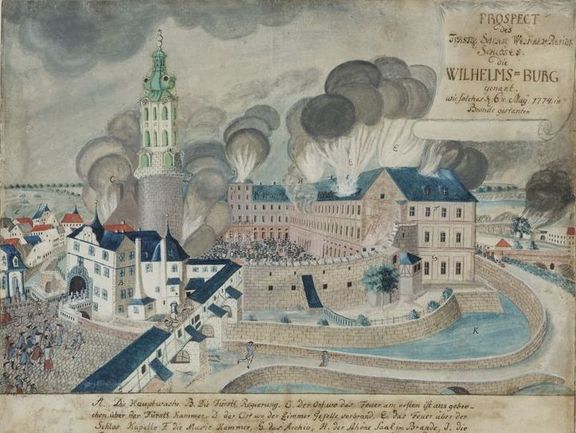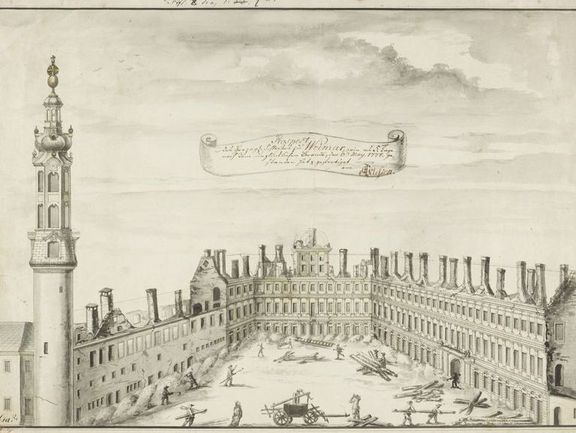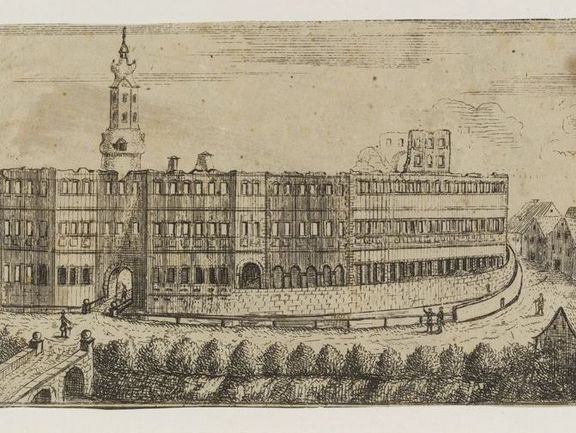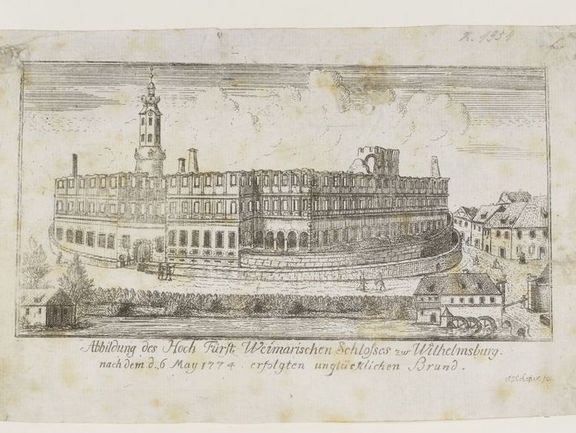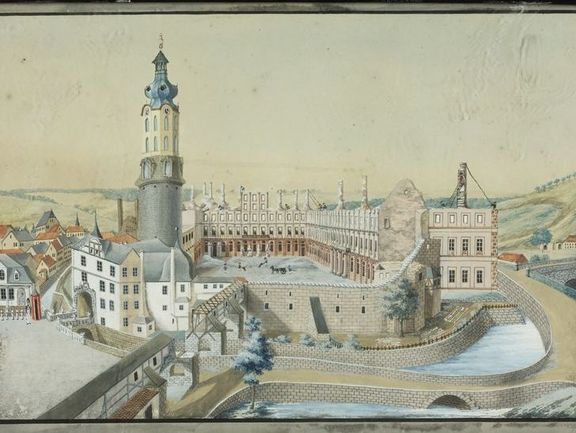Projects of the Klassik Stiftung Weimar are funded by the European Regional Development Fund (ERDF) and the Free State of Thuringia, represented by the State Chancellery of Thuringia, Department of Culture and the Arts.
![[Translate to English:] Christian Friedrich Tieck, Medaille auf den Wiederaufbau des Weimarer Residenzschlosses, 1803](/assets/media/c/3/csm_Header_4d7a84c169.jpg)
Catastrophe and a New Beginning
A commemorative medal in recognition of the reconstruction of the Weimar Castle
On 6 May 1774 the Weimar Residence Castle was engulfed in flames. Within half an hour, the fire had spread across the entire roof structure. There was no way to save the magnificent Baroque building. An eyewitness compared the catastrophe to the “abyss of Mount Aetna” and the “devastated Troy”. Christoph Martin Wieland noted later, “Aside from the bare stone outer walls, there is nothing left standing of the entire castle than the tower and the government; everything else was taken by the flames.” It was a miracle that only one person perished in the fire, a carpenter’s apprentice, who received a solemn burial.
Fifteen years later, the young sovereign Carl August decided to rebuild the castle in a splendid neo-Classical style atop the old foundation walls. He also appointed Goethe as a member of the Castle Construction Commission in 1789.
To remind future generations of the financially challenging efforts surmounted to rebuild the castle – which took another 15 years – Carl August commissioned an artist to create a commemorative medal. The astonishingly modern-looking coin was made in 1803. If one didn’t know how old it really was, one might think it was an artwork of the early 20th century. It shows the castle with its new, representative facade to the east – without ornamentation and reduced to its essential details: the Ilm River, the bridge and the columns above the portal. The depiction conveys almost abstract simplicity, dominated by clearly defined lines and geometric forms. The perspective is simple but not naive.
The bust of Carl August on the front is rendered in much starker relief, literally elevated in sublime grandeur. The face, hair and garments of the Duke are prominently depicted. The lettering possesses something both archaic and powerful. The text on the reverse is just as simple and short, summing up the reconstruction of the castle in one sentence:
„Exul Fato Redux Virtute (Displaced by fate, Restored by virtue)“
Apparently, the artist Christian Friedrich Tieck, who had produced several reliefs and sculptures for the castle, wished to convey a clear message of praise for the ruler. The idea was to establish the claim to power – in the medium of a medal. Instead of designing a rather small coin, Tieck produced a true heavy-weight, weighing in at almost a half kilogram and measuring just under 10 cm in diameter. But why did he choose bronze as a material, and not gold or silver? Not only is bronze a harder metal, it also enjoys an excellent reputation among artists as the material of choice. The best sculptors of antiquity worked with bronze. In the Middle Ages and early modernity, bronze was the preferred material for churches and kings and was used to evoke a sense of permanence and perpetuity.
Carl August drew from an honoured tradition. In 1618, after the castle had burned to the ground, the Dukes Wilhelm IV and Wilhelm Ernst had commemorative coins minted, featuring views of the castle from different angles. The Weimar castle, which only became the ducal seat in the 16th century after the small duchy suffered a catastrophic defeat at the hand of the Emperor’s army, eventually came to be regarded as an identity-building symbol. Since then, the celebration of new beginnings after catastrophe was repeatedly used to invoke the dynasty’s inexhaustible power of renewal.
The castle during and after the fire
For further impressions of the castle before, during and after the fire, visit our online Fotothek.
Christian Friedrich Tieck (1776–1851): Medal commemorating the reconstruction of the Weimar Residence Castle, 1803
Diameter: 98 mm
Material/technique: bronze
Inv. no.: MM-2020/23
Provenance: Thuringian State Library in Weimar
Collection: Coin and medallion collection of the museums of the Klassik Stiftung Weimar

